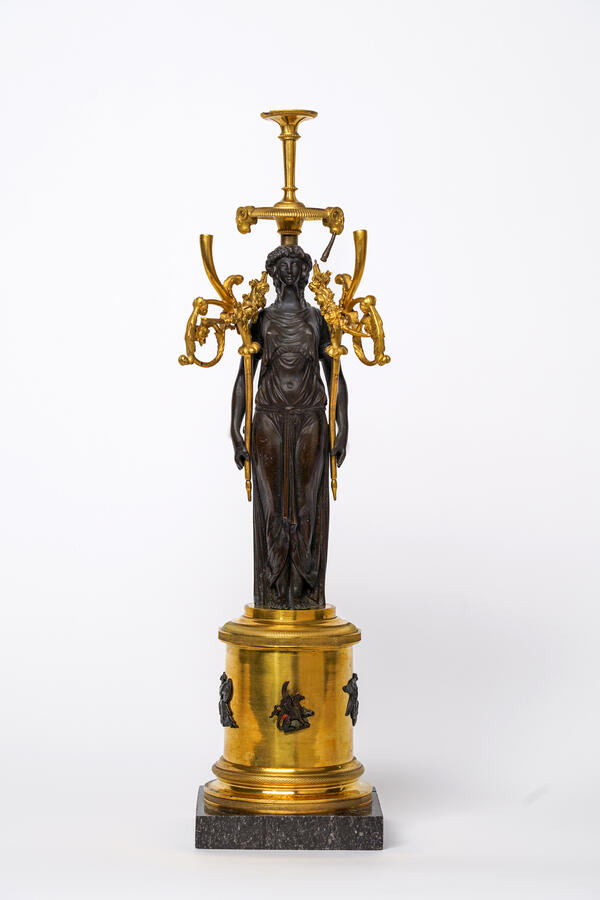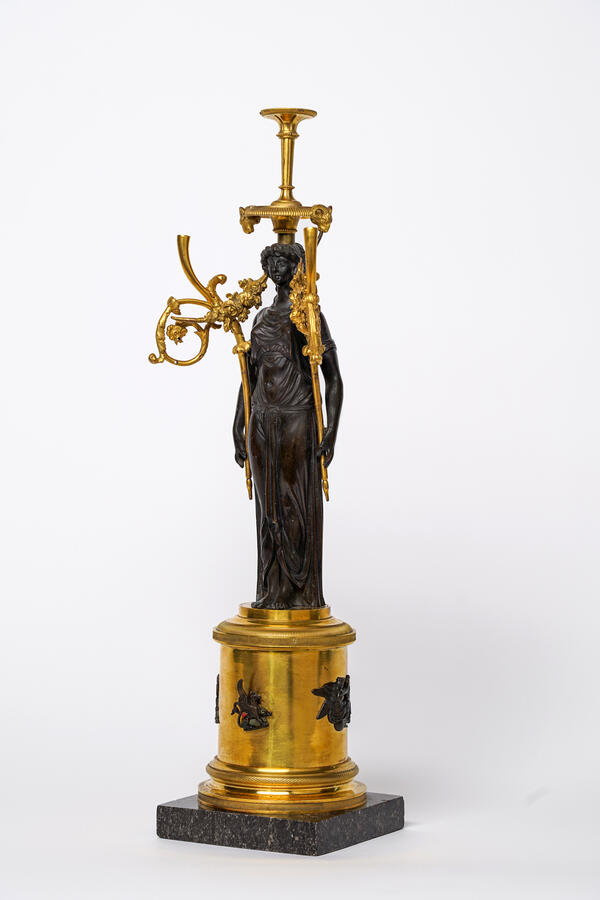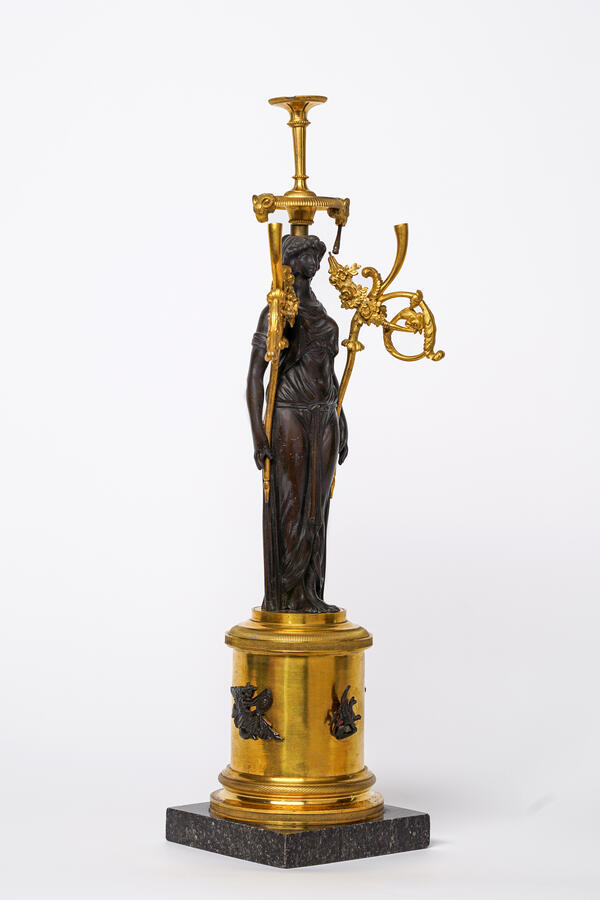The earliest decorated Russian illuminating devices date back to the 12th century. The most characteristic of those times were coronas lucis — church chandeliers. They were a complex multi-tiered construction. In the 14th–15th centuries in Novgorod there were special workshops where the casting of individual parts and the assembling of such illuminating devices were carried out. In the 16th–17th centuries artistic casting became popular. In the 18th century different social groups had different “luminaries”. Peasants usually used rushlight holders, where they burned splinters. Poor townsfolk had iron candlesticks, where they put tallow candles. The well-to-do townspeople and the nobility used luminaries with wax candles.
While the living rooms were lit with one or two candles, the reception rooms were lit as brightly as possible. In addition to the must-have chandelier, there were candelabra designed to hold a large number of candles — usually from three to twelve. They played a special role in the interiors of that time.
The ornately shaped candelabrum in the Kolomna Museum of Local History, depicting one of the Greek goddesses, never fails to catch the eye of visitors. It is known that the first metal chandeliers — wall, table and floor ones — were brought to Russia from France. Before the 18th century, most candelabra were cast from silver, and only later were they made from various ferrous metals or bronze. The cost of such items was considerably lower than that of silver, so they could be afforded even by the less well-to-do townsfolk.
Candelabra decoration was given special attention in the 18th–19th centuries. For example, Baroque pieces were decorated with maple leaves, small flowers and other floral ornaments. Classical style candlesticks imitated antique columns and statues. They were usually decorated with figures of mythological creatures or exotic animals such as griffins, lions, dolphins, as well as images of ancient gods or complete scenes from ancient Greek legends.
The chandeliers were usually placed in state rooms frequented by guests: the chamber, the reception room and the parlor. They were placed on special pedestals or decorative tables. When electricity first became available. the original role of candlesticks lost its relevance. However, these beautiful pieces have literally been revived, taking pride of place in the interior design of modern homes in the 21st century.
While the living rooms were lit with one or two candles, the reception rooms were lit as brightly as possible. In addition to the must-have chandelier, there were candelabra designed to hold a large number of candles — usually from three to twelve. They played a special role in the interiors of that time.
The ornately shaped candelabrum in the Kolomna Museum of Local History, depicting one of the Greek goddesses, never fails to catch the eye of visitors. It is known that the first metal chandeliers — wall, table and floor ones — were brought to Russia from France. Before the 18th century, most candelabra were cast from silver, and only later were they made from various ferrous metals or bronze. The cost of such items was considerably lower than that of silver, so they could be afforded even by the less well-to-do townsfolk.
Candelabra decoration was given special attention in the 18th–19th centuries. For example, Baroque pieces were decorated with maple leaves, small flowers and other floral ornaments. Classical style candlesticks imitated antique columns and statues. They were usually decorated with figures of mythological creatures or exotic animals such as griffins, lions, dolphins, as well as images of ancient gods or complete scenes from ancient Greek legends.
The chandeliers were usually placed in state rooms frequented by guests: the chamber, the reception room and the parlor. They were placed on special pedestals or decorative tables. When electricity first became available. the original role of candlesticks lost its relevance. However, these beautiful pieces have literally been revived, taking pride of place in the interior design of modern homes in the 21st century.






